 Ramesh Kumar Sehgal. Wadia Institute of Himalayan Geology, Dehradun-248001; Academy of Scientific and Innovative Research, Ghaziabad, Uttar Pradesh-201002, India. rksehgal@wihg.res.in
Ramesh Kumar Sehgal. Wadia Institute of Himalayan Geology, Dehradun-248001; Academy of Scientific and Innovative Research, Ghaziabad, Uttar Pradesh-201002, India. rksehgal@wihg.res.in
Dr. Ramesh Kumar Sehgal is working as a senior Scientist in the Biostratigraphy Group of Wadia Institute of Himalayan Geology, Dehradun, India. Dr. Sehgal received his Ph. D. degree from H. N. B. Garhwal University, Srinagar, Uttarakhand. Dr. Sehgal is working on the palaeontology and stratigraphy of the Neogene Siwalik mammals for the last three decades. He has also worked on the Oligo-Miocene vertebrate fossils from the Ladakh Molasse Group. His research interest include systematics, biostratigraphy, palaoecology, palaeoenvironment, dispersal patterns etc. of the Siwalik mammals.
![]()
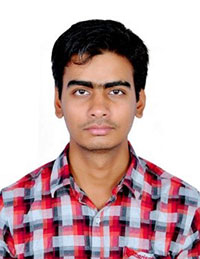 Abhishek Pratap Singh. Wadia Institute of Himalayan Geology, Dehradun-248001; Academy of Scientific and Innovative Research, Ghaziabad, Uttar Pradesh-201002, India. abhishekpratap@wihg.res.in
Abhishek Pratap Singh. Wadia Institute of Himalayan Geology, Dehradun-248001; Academy of Scientific and Innovative Research, Ghaziabad, Uttar Pradesh-201002, India. abhishekpratap@wihg.res.in
Abhishek Pratap Singh received his bachelors (B.Sc.) in geology and botany from the University of Lucknow, Uttar Pradesh, India, and master degree (M.Sc.) in geology from the HNB Garhwal University, Uttarakhand, India and he is currently pursuing Ph.D. at the Wadia Institute of Himalayan Geology, Dehradun, India. His research focuses on delineating and tracing the new fossiliferous horizons of the Miocene succession of the Siwalik Group at Nurpur, Kangra district (Himachal Pradesh) and Dunera, Pathankot district, (Punjab), India, along with establishing high-resolution biostratigraphy based on new findings of micromammals (rodents) and their correlation with equivalent horizons in India and elsewhere. He also carries out to understand the high-resolution palaeoecological and palaeoenvironmental conditions using stable carbon and oxygen isotopes from fossil tooth enamel and pedogenic nodules.
![]()
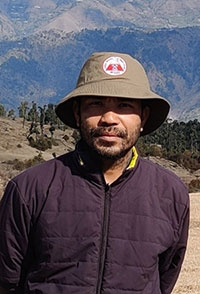 Ningthoujam Premjit Singh. Wadia Institute of Himalayan Geology, Dehradun-248001; Academy of Scientific and Innovative Research, Ghaziabad, Uttar Pradesh-201002, India. Corresponding author. ningthoujampremjit11@gmail.com
Ningthoujam Premjit Singh. Wadia Institute of Himalayan Geology, Dehradun-248001; Academy of Scientific and Innovative Research, Ghaziabad, Uttar Pradesh-201002, India. Corresponding author. ningthoujampremjit11@gmail.com
Dr. Ningthoujam Premjit Singh is currently working as a scientist in the Biostratigraphy Group at the Wadia Institute of Himalayan Geology, Dehradun (India). He received B.Sc. (Hons) from Manipur University, Manipur (India), M.Sc. and Ph.D. in Geology from Panjab University, Chandigarh (India). He also worked as a Research Associate at Panjab University, Chandigarh and Wadia Institute of Himalayan Geology, Dehradun from 2019 to 2022. His research interest includes systematics, biostratigraphy, paleoecology and taphonomy of Neogene aged small and large fossil mammals of Indian Subcontinent.
![]()
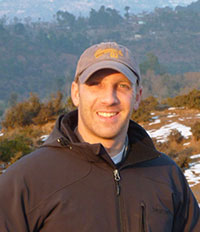 Christopher C. Gilbert. Department of Anthropology, Hunter College of the City University of New York, 695 Park Avenue, New York, NY 10065, USA; PhD Program in Anthropology, Graduate Center of the City University of New York, 365 Fifth Avenue, NY 10016, USA; New York Consortium in Evolutionary Primatology, New York, NY, USA; Division of Paleontology, American Museum of Natural History, Central Park West at 79th Street, New York, NY, 10024, USA. cgilbert@hunter.cuny.edu
Christopher C. Gilbert. Department of Anthropology, Hunter College of the City University of New York, 695 Park Avenue, New York, NY 10065, USA; PhD Program in Anthropology, Graduate Center of the City University of New York, 365 Fifth Avenue, NY 10016, USA; New York Consortium in Evolutionary Primatology, New York, NY, USA; Division of Paleontology, American Museum of Natural History, Central Park West at 79th Street, New York, NY, 10024, USA. cgilbert@hunter.cuny.edu
Dr. Christopher Gilbert is a Professor in the Department of Anthropology at Hunter College, CUNY and a research associate in the Division of Paleontology at the American Museum of Natural History. Dr. Gilbert received A.B. in Biological Anthropology and Anatomy from Duke University and his Ph.D. from Stony Brook University in 2008. Dr. Gilbert's research focuses broadly on many topics over the last 66 million years of primate and mammalian evolutionary history. Over the past 13 years, Dr. Gilbert has been conducting paleontological fieldwork in the Neogene deposits of the Indian Siwalik Hills, particularly the Lower Siwaliks near Ramnagar, in collaboration with colleagues at Panjab University, the Wadia Institute, the University of Southern California, and Arizona State University. His current research interests include Neogene primate and mammalian evolution, biochronology, and biogeography in Africa and Asia, including the evolutionary history and phylogenetic systematics of catarrhine primates.
![]()
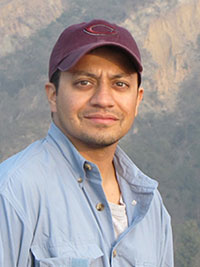 Biren A. Patel. Department of Integrative Anatomical Sciences, Keck School of Medicine, University of Southern California, Los Angeles, CA 90033, USA; Human and Evolutionary Biology Section, Department of Biological Sciences, University of Southern California, Los Angeles, CA 90089, USA. birenpat@usc.edu
Biren A. Patel. Department of Integrative Anatomical Sciences, Keck School of Medicine, University of Southern California, Los Angeles, CA 90033, USA; Human and Evolutionary Biology Section, Department of Biological Sciences, University of Southern California, Los Angeles, CA 90089, USA. birenpat@usc.edu
Dr. Biren Patel is Professor in the Department of Integrative Anatomical Sciences at the Keck School of Medicine of the University of Southern California. Dr. Patel received his B.A. in Anthropology from the University of Chicago and his Ph.D. in Anthropological Sciences from Stony Brook University. Dr. Patel's research investigates questions covering a range of topics on comparative, functional and evolutionary anatomy, with a focus on the primate and mammal postcranial skeleton. Dr. Patel uses a variety of 3D imaging modalities to better understand the anatomy he studies and uses the same methods to promote open access research of virtual vertebrate fossil specimens. Since 2010, Dr. Patel has been conducting paleontological fieldwork in Neogene deposits of the Indian Siwalik Hills, particularly the Lower Siwaliks near Ramnagar, in collaboration with colleagues at Panjab University, Wadia Institute of Himalayan Geology, Hunter College-CUNY, and Arizona State University.
![]()
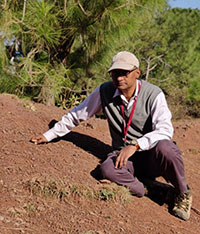 Rajeev Patnaik. Department of Geology, Panjab University, Chandigarh-160014, India. rajeevpatnaik@gmail.com
Rajeev Patnaik. Department of Geology, Panjab University, Chandigarh-160014, India. rajeevpatnaik@gmail.com
Dr. Rajeev Patnaik is a Professor in the Department of Geology, Panjab University, Chandigarh, India. He is a Ph.D. from Panjab University and a post-doc from Institute of Evolutionary Sciences, Montpellier, France. He is interested in the evolution of Indian Neogene and Quaternary mammals and their palaeoecology including geological context of primate/human evolution, and the impact of climate change on evolution. He uses a multidisciplinary approach (stable isotopes, dental microwear, microstructure, cladistics etc.) to address these questions and has done field and lab work in Egypt, USA, Germany, France, Australia and Japan.

